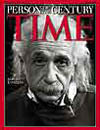Spin-off Technology from Gravity Probe B
 What does Gravity Probe B have to do with the military's
Global Positioning System and an automated tractor? GP-B uses
the GPS system to give a very accurate position and time stamp
to all its opertions. We are a civilian project, and
normal civilian GPS receivers have a precision of about 100 yards.
Measuring minute changes in spacetime requires a better positioning
accuracy than that, so we began looking at alternatives. A system
called differential GPS can provide meter-level accuracy. Graduate students here have
improved the system to provide centimeter-level precision which
has been applied to develop automated tractors and automated
aircraft landing. That's a big deal. For more information,
read the Stanford Report article: ‘Tractor drivers soon may say, "Look, Ma!
No hands!"’ and see what the Stanford School of Engineering Annual Report has to say about GP-B graduate
Clark Cohen.
What does Gravity Probe B have to do with the military's
Global Positioning System and an automated tractor? GP-B uses
the GPS system to give a very accurate position and time stamp
to all its opertions. We are a civilian project, and
normal civilian GPS receivers have a precision of about 100 yards.
Measuring minute changes in spacetime requires a better positioning
accuracy than that, so we began looking at alternatives. A system
called differential GPS can provide meter-level accuracy. Graduate students here have
improved the system to provide centimeter-level precision which
has been applied to develop automated tractors and automated
aircraft landing. That's a big deal. For more information,
read the Stanford Report article: ‘Tractor drivers soon may say, "Look, Ma!
No hands!"’ and see what the Stanford School of Engineering Annual Report has to say about GP-B graduate
Clark Cohen.
 How do you bond the quartz optical and mechanical components
of a science instrument so as not to interfere with its workings?
You'd need a bonding technology that was transparent to visible and near-infrared
light, which worked in the vacuum of space, which didn't create
any magnetic disturbance and was capable of handling rapid temperature
changes and extreme cold (going from room temperature to below
-271 degrees Celcius without even a hairline crack!). So much
for Elmer's glue... Scientist Jason Gwo invented a new material
called OptoBondTM to do the job. Industry applications
include bonding improvements in optoelectronics, precision optics, laser optics, laser crystal augmentations,
general optomechanical applications and creation
of optical systems. For more information on OptoBondTM,
contact Kirstin Leute of the Stanford
Office of Technology Licensing at kirstin.leute@stanford.edu.
or read the Brainstorm article
How do you bond the quartz optical and mechanical components
of a science instrument so as not to interfere with its workings?
You'd need a bonding technology that was transparent to visible and near-infrared
light, which worked in the vacuum of space, which didn't create
any magnetic disturbance and was capable of handling rapid temperature
changes and extreme cold (going from room temperature to below
-271 degrees Celcius without even a hairline crack!). So much
for Elmer's glue... Scientist Jason Gwo invented a new material
called OptoBondTM to do the job. Industry applications
include bonding improvements in optoelectronics, precision optics, laser optics, laser crystal augmentations,
general optomechanical applications and creation
of optical systems. For more information on OptoBondTM,
contact Kirstin Leute of the Stanford
Office of Technology Licensing at kirstin.leute@stanford.edu.
or read the Brainstorm article
 Our engineers created a revolutionary detector mount system to provide thermal insulation between detector electronics operating
at 80 degrees kelvin and a quartz telescope operating at 2.5
degrees kelvin. Did we mention that the two dual photo-diode
detectors also have to withstand 5.0 g forces and use less than
one milliwatt of power per detector? The signals from these detectors
must be clean enough to provide the star-tracking telescope of
GP-B with an accuracy approaching 100 millionths of an arc-second
per year. What's the practical application? Faster and more efficient digital
cameras, among others. Hey - with technology allowing 5 g's of shock tolerance, you might be able
to drop that camcorder a few times. Check out the article from Laser Focus World
Our engineers created a revolutionary detector mount system to provide thermal insulation between detector electronics operating
at 80 degrees kelvin and a quartz telescope operating at 2.5
degrees kelvin. Did we mention that the two dual photo-diode
detectors also have to withstand 5.0 g forces and use less than
one milliwatt of power per detector? The signals from these detectors
must be clean enough to provide the star-tracking telescope of
GP-B with an accuracy approaching 100 millionths of an arc-second
per year. What's the practical application? Faster and more efficient digital
cameras, among others. Hey - with technology allowing 5 g's of shock tolerance, you might be able
to drop that camcorder a few times. Check out the article from Laser Focus World
 "The most important motive for study at school, at the university, and in life is the pleasure
of working and thereby obtaining results which will
serve the community. The most important task for our educators is to awaken and encourage
these psychological forces in a young man {or woman}. Such a basis
alone can lead to the joy of possessing one of the most precious assets
in the world - knowledge or artistic skill."
"The most important motive for study at school, at the university, and in life is the pleasure
of working and thereby obtaining results which will
serve the community. The most important task for our educators is to awaken and encourage
these psychological forces in a young man {or woman}. Such a basis
alone can lead to the joy of possessing one of the most precious assets
in the world - knowledge or artistic skill."
--Albert Einstein
Gravity Probe B has been a proud participant in higher education for forty years. To date we have awarded 73 Doctorates, 15 Master’s Degrees and 5 Engineer’s Degrees at Stanford University, and have aided in the completion of 13 Doctorates at other universities.
Would you like to know more about just how the U.S. space program has contributed to daily life? View the Spinoffs web page at NASA. You can also visit the Space Technology Hall of Fame honoring America's space technologies. Or, take a tour of how space research has impacted our society at the Space Research and Technology Transfer web site.
